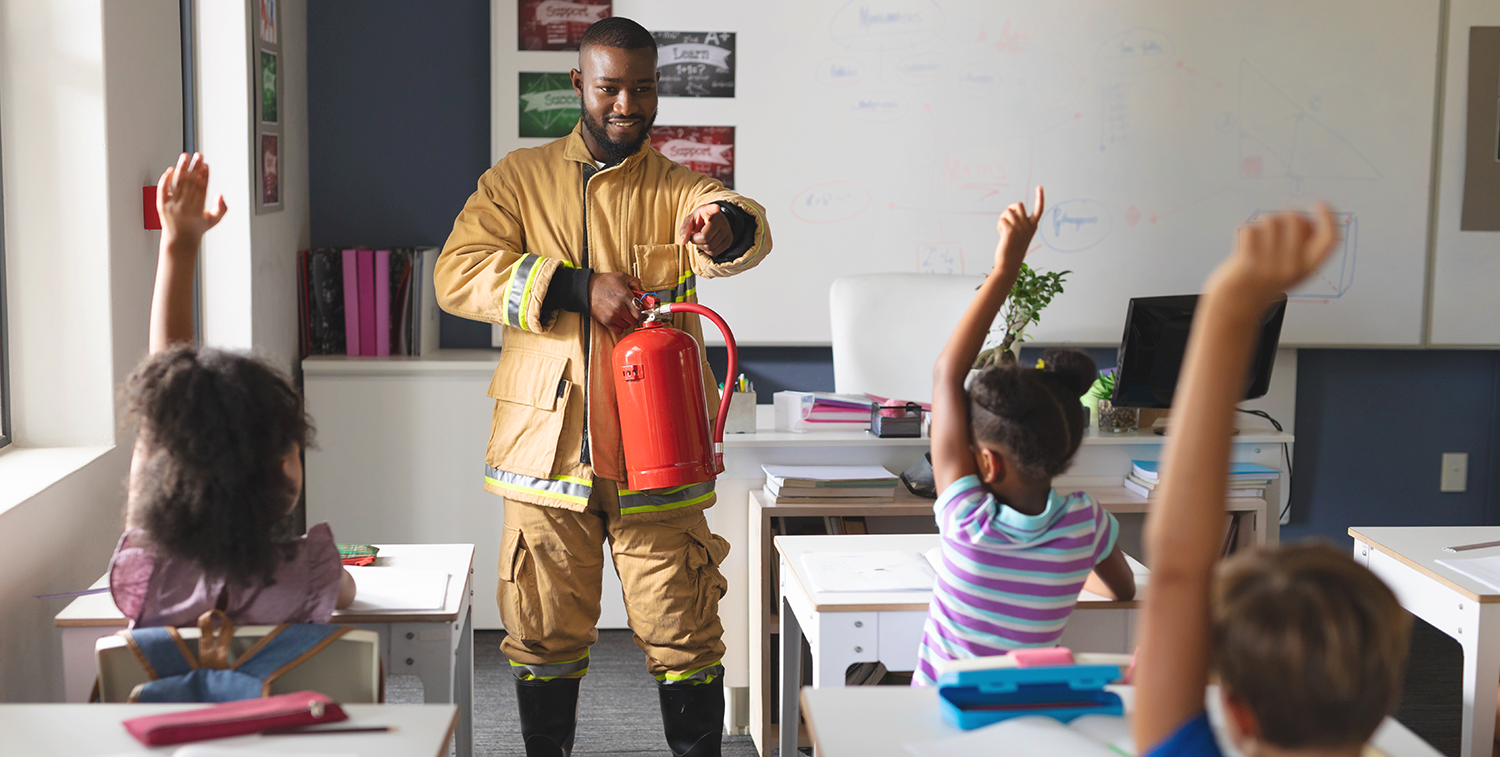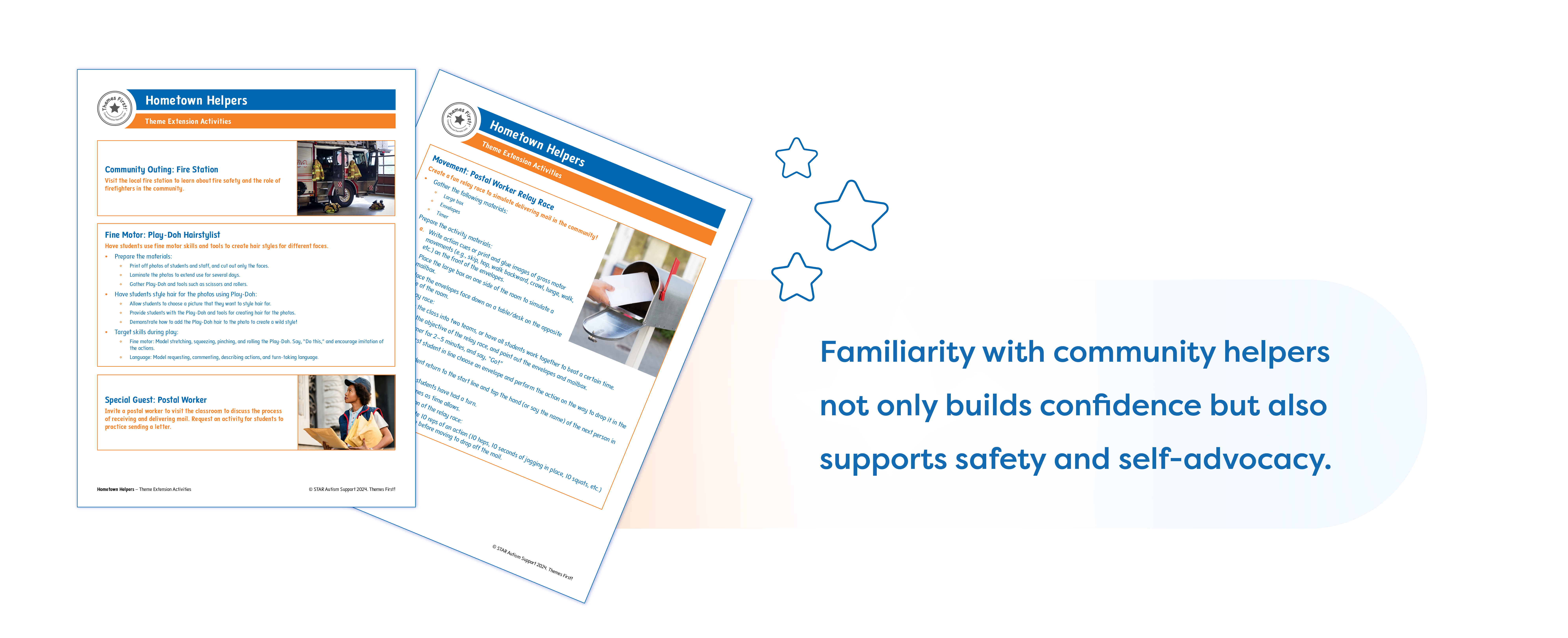September 2025 Newsletter | Connecting With Community Helpers

Lea este artículo en español aquí.
Connecting With Community Helpers
Helping students feel confident and safe in their communities starts with familiarity. This month, we’re focusing on introducing everyday helpers like firefighters, police officers, and hairstylists through engaging, supportive strategies.
Introduce Community Helpers Teach students to identify helpers and their roles in the community.
|
Prepare for Community Outings Some intentional practice and preparation will help empower students as they navigate public spaces and engage with community helpers.
|
Participate in Community Activities Familiarity with community helpers not only builds confidence but also supports safety and self-advocacy.
|
With the right tools and preparation, students can feel empowered and ready to engage with the wonderful community helpers around us!


